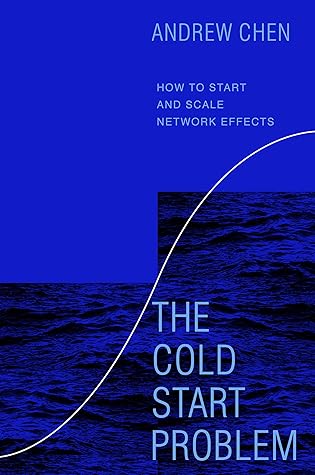More on this book
Community
Kindle Notes & Highlights
by
Andrew Chen
Read between
January 5 - April 6, 2022
Chris Nakutis Taylor, one of the early general managers at Uber, describes their importance: ETAs were always terrible to start. +15 min in some areas, especially in the suburbs. There was another key metric. Get ETAs down under 3 min on average as quickly as possible while covering the whole city. If you could get ETAs, unfulfilleds, and surge down quickly, you’ll have a healthy market.
The networked product should be launched in its simplest possible form—not fully featured—so that it has a dead simple value proposition. The target should be on building a tiny, atomic network—the smallest that could possibly make sense—and focus on building density, ignoring the objection of “market size.” And finally, the attitude in executing the launch should be “do whatever it takes”—even if it’s unscalable or unprofitable—to get momentum, without worrying about how to scale.
The networked product should be launched in its simplest possible form—not fully featured—so that it has a dead simple value proposition. The target should be on building a tiny, atomic network—the smallest that could possibly make sense—and focus on building density, ignoring the objection of “market size.” And finally, the attitude in executing the launch should be “do whatever it takes”—even if it’s unscalable or unprofitable—to get momentum, without worrying about how to scale.
However, the trick is to look closer—to segment the hard side of the network and figure out who is being underserved.
In other words, the ideal product to drive network effects combines both factors: The product idea itself should be as simple as possible—easily understandable by anyone as soon as they encounter it. And at the same time, it should simultaneously bring together a rich, complex, infinite network of users that is impossible to copy by competitors.
I encourage product teams to develop their own form of this metric, laid out as a dashboard of networks—whether that’s divided by geography, product category, or whatever else makes sense. Within each, it can be useful to track the percentage of consumers that are seeing zeroes.
The early work on scurvy gave us the foundational tools. But instead of providing citrus and measuring for malnutrition, tech companies can reason by analogy: create user cohorts by levels of engagement, and analyze what differentiates high value users from lower value ones. These start out as correlations, so use A/B testing to prove causality—once the best levers are found, test many variations of these ideas. Rinse and repeat,
new users might start to seek another network where they can be successful. They want a more level playing field, and to get that, they will constantly try new products from competitors—not
Network density beats total size, a theme we’ve seen throughout the examples of this book.
You’d rather have a smaller set of atomic networks that are denser and more engaged than a large number of networks that aren’t there.
But here’s the paradox: To build a massive successful network effect, I argue that you must start with a smaller, atomic network.
However, the rideshare competition also shows the fallacy in believing in winner-take-all markets—instead, products compete as networks of networks, so that even when Uber’s network was bigger in aggregate, it was only 50/50 in cities like San Francisco and Los Angeles against Lyft.


